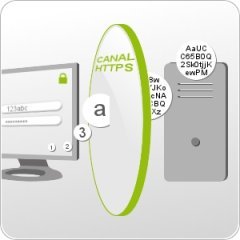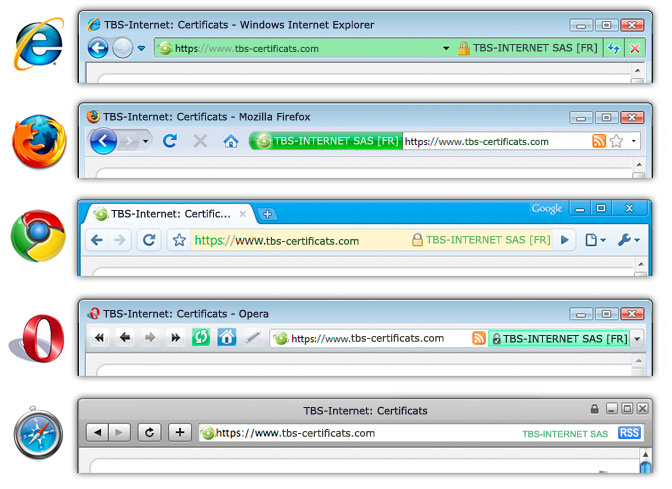About ssl
Enhancement of data transfer safety level and the growth of the SSL technology is due to the increasing number of online transactions.
Daily used, the SSL protocole is totally transparent and works without any manipulation from the webuser.
What is it ? How does it work ?
- What's SSL ?
- What's a digital certificate ?
- The server certificate
- The server certificate
What's SSL ?
Developed by Netscape, the SSL (Secure Socket Layer) or TLS (Transport Layer Security), is a protocole used to secure online transactions.
It has several missions:
- Authentify the server
- Guarantee the confidentiality of exchanged datas
- Assure those datas integrity
- Optionaly identify a client through its digital certificate
HOW DOES IT WORK ?
The SSL protocole creates a communication channel between a client and a server independently from the protocole, it secures online transactions (HTTP protocole) as well as FTP, IMAP or POP protocoles connexions.
That communication channel is an opaque tunnel that prevents anybody to see the content of the transaction.
In a schematic way:

Non-secured tranfer, no SSL certificate: A see-through communication tunnel, information can be seen by anybody.

SSL-secured transfer:
opaque communication tunnel.
Data cannot be seen.
It can be compared to the mechanism of a lock (public key) and its key (private key):
The privet key is saved on the server.
The public key, known by anybody encrypts sending datas, that are decoded on the server by the privet key.
What's a digital certificate ?
A SSL certificate is a digital ID whose goal is to identify the owner of a server, a website or an Email address.
It is issued by a trusted third part called a certification authority, such as Thawte, that testifies the certificate's owner identity.
The server certificate
To make the SSL security work (for online transactions for example) a server certificate is required.
A server certificate carries:
- The name of the privet key owner
- The name of the certification authority that has issued the certificate
- The certificate validity period
- A serial number...
What does the webuser see
When surfing, a webuser can see information about websites on the address bar.
On Firefox 3:

Firefox 3 discerns 5 kinds of websites according to the information they deliver. Each kind owns its proper warning alert:
On other browsers:

SAFETY LOCK DISPLAY:


Our prices are in GBP VAT-less and order-time payment, see also our general sales terms.








